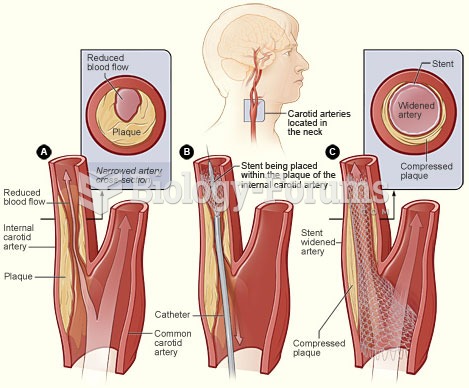Answer to Question 1
Responses should consider:
- The vulva, or female external genitals; components are the mons veneris, the labia majora, the labia minora, the urethral opening, the clitoral glans, the vaginal opening, the hymen, the perineum, and the anus.
- The mons veneris: it's a slightly raised layer of fatty tissue on the top of the pubic bone and is usually covered with public hair.
- Part of its evolutionary function is theorized to cushion the impact with the pubic bone during sexual intercourse.
- The labia majora, or major lips: they are folds of skin and fatty tissue and extend from the mons down both sides of the vulva, past the vaginal opening to the perineum.
- The labia minora: they are smooth, hairless, and vary in size and shape from woman to woman. They are sexually sensitive; during sexual arousal they become engorged with blood, become moist, and darken in color.
- The clitoral glans and hood: at the top of the labia minora is the clitoral glans, which is the tip of the clitoris and the part that can be seen.
- It is typically covered partly or completely by the clitoral hood. Stimulation of the clitoral glans, either directly or indirectly, is primarily responsible for producing orgasm in most women.
- The clitoris: the clitoral shaft is about 0.5 inches in diameter and divides into two legs as it extends 3-4 inches into a woman's body. These shafts pass on either side of the urethra and vagina.
- The clitoris engorges with blood along its entire length, straightens out, and becomes erect during sexual activity.
- The urethral opening: it's the outside end of the tube leading from the bladder and is about halfway down the vulva, between the clitoris and the vagina.
- It's sensitive, and can provide pleasurable sexual sensations for some when stimulated.
- The hymen: it's a thin layer of tissue that partly covers or surrounds the vaginal opening.
- It's closely tied to the notion of female virginity.
- The condition of a woman's hymen does not indicate virginity.
- First intercourse usually causes little or no damage to the hymen.
- If it does tear, the trauma to the structure is minor and usually not painful.
- Pregnancy can still occur when the hymen is intact.
Answer to Question 2
Responses should consider:
- Testicular cancer is the most frequently diagnosed cancer in men between the ages of 15 and 35; approximately 9,000 new cases were identified in the U.S. in 2013.
- The incidence of testicular cancer worldwide has increased more than 50 since 1970s.
- The average age at which it is diagnosed has been decreasing from 30 to under 25 years of age.
- There's a greater incidence of testicular cancer among men who work in certain professions (agricultural workers, miners, firefighters, and utility workers).
- This has led some researchers to suspect that exposure to environmental toxins may play an important role.
- Today, the average cure rate for testicular cancer is 90, with a much greater success rate (nearly 99) when the disease is diagnosed early.
Testicular self-examination:
1. Stand in front of a mirror; check for swelling on the scrotum skin.
2. Examine each testicle with both hands. Place the index and middle fingers under the testicle with the thumbs placed on top, and roll the testicle gently between the thumbs and fingers.
3. Find the epididymis. Once one becomes familiar with this structure, it is less likely to be mistaken for a suspicious lump. Cancerous lumps are usually found on the sides of the testicle, but can also show up on the front or at the bottom.
4. If you find a lump, see a doctor right away; only a physician can make a positive diagnosis.







